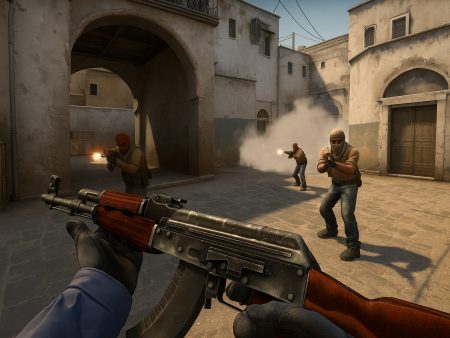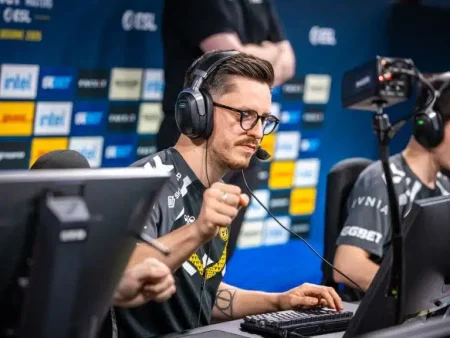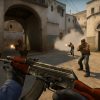Learn how to lurk effectively in CS2 with this in-depth guide covering strategies, map tips, weapon choices, pro examples, and advanced techniques to outsmart your enemies and dominate the game.
Lurking in CS2 (Counter-Strike 2) isn’t just about sneaking around and going for sneaky kills. It’s an art—one that, when done right, can completely dismantle the enemy’s strategy without them even realizing what’s happening. At its core, lurking is a tactical role where a player intentionally stays behind or takes an off-route to catch rotating enemies or gain information while the rest of the team executes a play elsewhere.
Think of a lurker as the silent predator, always watching, waiting for the perfect time to strike. They don’t rush with the pack—they prowl. A well-positioned lurker can single-handedly change the tide of a round by taking out key defenders or drawing attention away from the bombsite push.
The main objective? Disrupt the enemy. Force them into uncomfortable positions. Make them second-guess their rotations. A good lurker is unpredictable, hard to read, and always one step ahead.
But here’s the thing—lurking is more than just getting a backstab or flanking. It’s about making intelligent decisions, understanding timing, and providing value to the team even if you’re not fragging out every round. It requires patience, strategic thinking, and a deep understanding of how the enemy team is moving.
The Role of a Lurker in a Team Composition
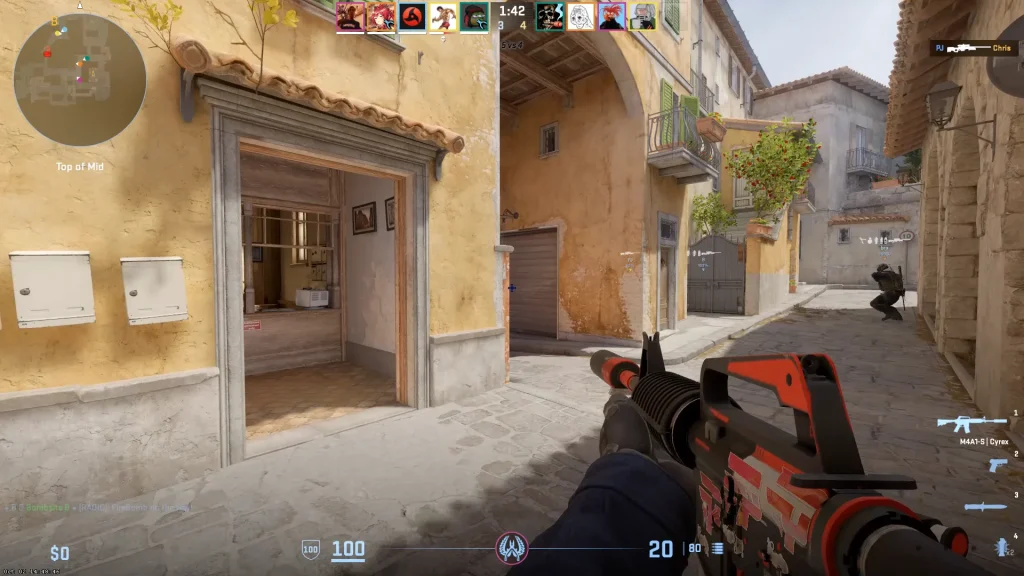
In a typical CS2 match, you’ll see roles like entry fragger, AWPer, support, in-game leader (IGL), and of course—the lurker. While others focus on direct confrontations and entry tactics, the lurker plays the long game. They probe the map, look for information, and punish overextensions. They might hold an angle for 45 seconds, waiting for that one CT to push banana or peek mid.
When done correctly, lurking allows the rest of the team to:
- Gain map control without direct confrontation
- Have a “safety net” in case a site hit goes wrong
- Cut off rotating enemies or catch flanks
- Apply psychological pressure across the map
Great teams build strategies around their lurker. Why? Because when a lurker is alive late into the round, it forces the enemy to remain honest on every part of the map. They can’t freely rotate without checking corners or watching their backs. And in those few seconds of hesitation? That’s when the site is lost.
Understanding the Basics of Lurking
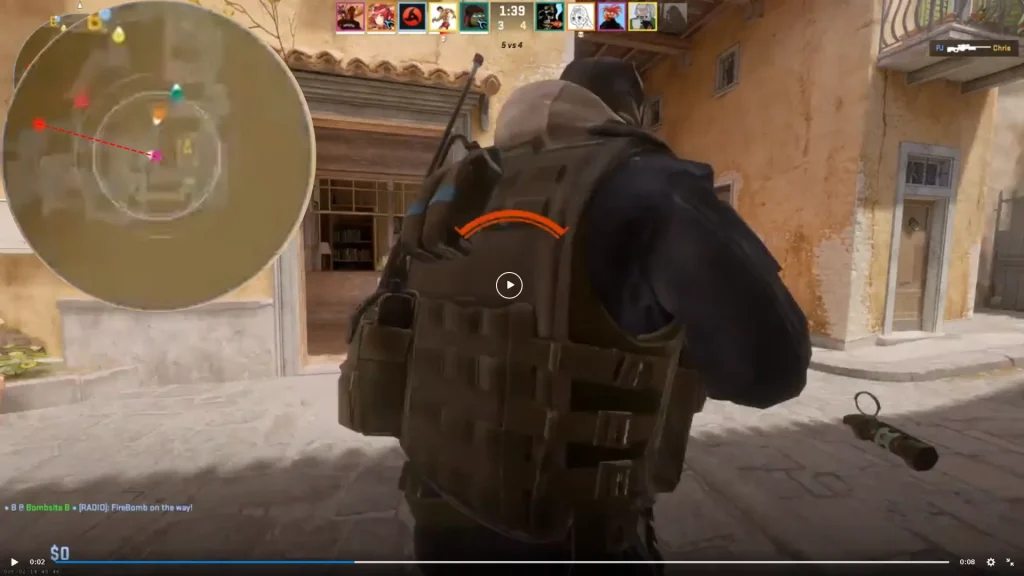
Core Objectives of a Lurker
So, what exactly should you be doing as a lurker? Let’s break it down.
- Map Control & Presence: You need to hold down areas of the map that could be pushed by the enemy. Think of A apps on Mirage or Banana on Inferno. By holding these spots, you stop the enemy from getting information or map control for free.
- Information Gathering: One of your biggest responsibilities is feeding intel to your team. You’re the eyes and ears on the opposite side of the map. Whether you hear footsteps, utility usage, or spot a rotation—every bit of info helps shape the next move.
- Punish Rotations & Overextenders: Catch enemies who rotate early. Most teams will have players leaving sites before the push even starts. Your job? Be in the right spot to punish them with a well-timed flank or off-angle peek.
- Timing the Backstab: The art of lurking is all about timing. You can’t show yourself too early and give away your position, but you also can’t be so late that your team dies before you make an impact. Perfecting this balance is what separates good lurkers from great ones.
- Creating Distractions: Sometimes your presence alone is enough to pull a defender or draw utility. Fake noise, shoulder peeks, and even failed entries can still serve the greater plan if it pulls CTs out of position.
Remember: not every round is about getting kills. A good lurker might only get one frag per round—but it’s always a high-value kill that breaks open the defense.
Common Misconceptions About Lurking
Let’s clear up a few myths, shall we?
- “Lurkers are just baiters.” Nope. A baiter watches their teammate die without helping. A lurker delays confrontation for strategic reasons and helps control map pressure.
- “Lurkers play solo and don’t need comms.” False. Lurking is a team role. You need to communicate rotations, timings, and info constantly.
- “Anyone can just hold back and be a lurker.” Again, wrong. Lurking isn’t just staying behind. It’s deliberate, calculated movement. It requires timing, intuition, and a deep understanding of team dynamics.
- “If I’m not getting kills, I’m not lurking well.” Not true. Sometimes just existing in a spot is enough. Your role is to control space and gather info—even without firing a single shot.
Lurking is about doing more with less. It’s a chess game, not a deathmatch.
Essential Skills Every Lurker Needs
Map Awareness and Game Sense
This is your bread and butter. You need to know every angle, every corner, and every timing window like the back of your hand. Map knowledge is what allows you to predict rotations, find openings, and make impactful plays without relying on luck.
Game sense ties into this. It’s the intuition you build over time—knowing when a CT might peek mid, or when someone’s likely hiding in dark. You develop this by watching demos, playing tons of hours, and analyzing enemy behavior patterns.
Ask yourself:
- “What would I do if I were defending this bombsite?”
- “Have they used any smokes or flashes yet?”
- “Why hasn’t anyone pushed this angle yet?”
Lurkers who can answer these questions mid-round are the ones who win clutches and make game-winning plays.
Patience and Timing
Patience separates the pros from the wannabes. As a lurker, you might sit in one spot for over a minute. It can feel boring—but it’s crucial. Your entire play could hinge on waiting for that one misstep from the enemy.
Good timing doesn’t just mean showing up late. It means showing up at the right time—just as the defenders are rotating, distracted, or low on utility. Perfectly timed lurks win rounds.
Communication and Team Synergy
Yes, lurkers still need mics. You’re the silent hunter, but you’re also the team’s radar behind enemy lines. You need to call:
- Where the enemy is rotating
- What utility was used
- If you hear footsteps or repositions
And crucially—you need to time your push or peek with your team’s execution. The best lurkers enter the site from the back just as the defenders turn to fight the front line.
Lurking Strategies for Different Maps
Best Lurking Spots on Mirage, Inferno, and Overpass
Every map has those hidden crevices, timings, and rotation paths that lurkers can exploit. Knowing where to lurk is just as important as how.
- Mirage
On Mirage, common lurk spots include Palace / A Apartments when your team is pushing B (so you can catch CTs rotating through Connector or Jungle). Also, lurking Underpass → Connector → Catwalk is strong because you can pin down defenders who over-rotate or try to hold mid. Another idea is lurking Tetris / CT Spawn if you’re pushing A, waiting for CTs to reenter or flank. - Inferno
On Inferno, Banana is a famous lurk path. If your team is hitting A, going deep Banana then wrapping around is high-risk, high-reward. Also you can lurk through CT Mid / Apartments / Arch to catch rotations from B → A. On B pushes, you might lurk CT Spawn / Coffins to punish late rotations from A. The key is to take paths where CTs expect no one or paths they may skip in their mental rotation. - Overpass
Overpass gives interesting vertical and connector angles. A lurker can move from Bathrooms / Water to Connector, or Long Sewer → Monster → B to arrive behind the defense. Another useful line is A to Connector / Bank path to catch A → B rotations. Because Overpass has many long corridors and vertical elements, hiding behind boxes, balancing noise, and using subtle utility can make your lurks more lethal.
In all maps, the idea is: you want paths that are less traveled, paths where CTs might assume no one is watching, but also paths where rotation is natural. If you lurk the same spot every round, defenders will adapt.
Adjusting Lurking Style Based on Map Design
Maps come with different traits: chokepoints, long sightlines, multiple flank paths, verticality, tight corners, etc. Your lurking style must adapt accordingly.
- On maps with long sightlines (e.g. Overpass, Mirage mid), don’t stay static in open space. Use cover, shadows, and crouch-walk to minimize exposure. Don’t show your head unless you have a reason. Pop out only when the enemy is committed elsewhere.
- On maps with tight corridors and narrow paths (e.g. Banana in Inferno, mid tunnels in Overpass), you can be more aggressive but still cautious. Pre-clear common corner angles and use utility (nades/smokes/flashes) to deny CTs vision or movement.
- For maps with multiple rotation routes, vary your lurk paths. Don’t always lurk deep via the same route. If there’s mid, connector, or back alley options, mix them up. Being unpredictable is crucial.
- Also consider sound cues: on maps with more echo or reverberation (e.g. tight indoor areas), your footsteps or utility use can travel farther. Be extra careful about noise in those areas.
Adjusting style also means adjusting timing. On maps with fast rotates (especially small maps), you might need to strike earlier or pick more aggressive angles to prevent CTs from shutting you out.
Weapon Choices and Utility Usage
Best Weapons for Lurkers
A lurker’s weapon choice often balances stealth, kill potential, and survivability. Here are some good options and when to use them:
- Silenced / quieter weapons: If the map allows or you have a suppressor (if applicable), using quieter weapons can help you avoid giving away your position. In CS2, while there’s no silencer on AK/M4 by default like older CS, picking weapons that don’t scream to the enemy (i.e., avoid loud spray fights) is smart.
- Rifles (AK‑47 / M4A1-S / M4A4): These are solid choices because they offer one-tap or multi-tap potential. As a lurker, if you catch someone unawares, you want to kill quickly. Rifles are versatile for both mid and long-range duels if your angle opens.
- SMGs / MP5 / MP7: On close-quarter lurks or paths through tight corridors, SMGs can shine. The higher mobility helps you reposition quickly after a kill or miss. Their lower cost also helps in eco or semi-buy rounds.
- Pistols (USP‑S, P250, Deagle, Five‑Seven, Tec‑9): In early rounds or awkward money rounds, use what you have. For example, USP‑S’s quietness is helpful. A well-placed Deagle shot while lurking can be devastating.
- AWP / Sniper (selectively): If you’re comfortable, sometimes a lurker holding a long line (e.g. CT spawn, long mid) can double as a sniper. But it’s risky—you lose mobility, and missing shots as a lurker is costlier.
General rule: pick something you trust, something that gives you kill potential and some flexibility.
Using Smokes, Flashes, and Molotovs to Gain Advantage
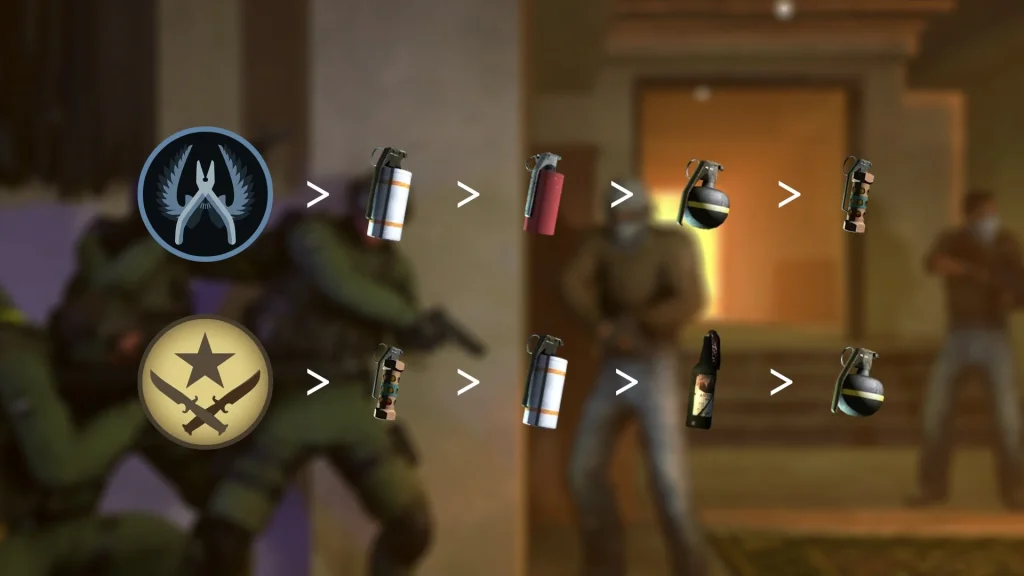
Utility is often what makes the difference between a lurker getting a kill or getting completely shut down. Use your grenades to supplement your stealth and pressure.
- Smoke Grenades
Use smokes to block CT vision on rotation paths—so they hesitate or avoid retaking. You can also deploy smokes behind you after a kill to cut off CTs chasing your flank. In some cases, smokes help you slip past defenders or reposition unobserved. - Flashbangs / Pop-flashes
A well‑timed flash around a corner you intend to peek can blind defenders, making your lurk safer. Sometimes a fake flash toward your main push can draw CTs’ attention, letting you slip through an alternate path. - Molotov / HE
Molotovs can deny CTs early push into your lurk spot. If CTs decide to push aggressively (e.g. banana in Inferno), throw a molotov to force them back. HE grenades help chip health off defenders who might peek late—making your kill easier. - Decoy / Fake utility
Sometimes using a decoy or even throwing a fake grenade (if game allows) in another direction makes CTs think there’s presence there. It can lure rotations or distract them. Even fake footsteps or sounds (if possible) help.
Important caution: don’t overuse utility. Every time you use a grenade, you risk giving away your position. Use them selectively, when they create or preserve opportunities, not just for the sake of “doing something.”
Lurking During Different Rounds
Lurking in Pistol Rounds
Pistol rounds are high variance. As a lurker, your goal is survival, getting value off duels, and either drawing rotations or punishing poor CT positioning.
- Play safer angles: You don’t want to die early by overextending. Pick angles where you can fall back if needed.
- Use surprise: Many CTs expect aggression in pistols; a silent lurk or a flank can catch them off guard.
- Utility is limited: You may not have many grenades. Use what you have wisely. Even a well-placed flash can win a clutch duel.
- Coordinate with your team: Let them know where you plan to lurk so the rest avoid crossing your path or exposing you.
In pistol rounds, kills are more unpredictable. So long as you survive longer than expected and cause confusion, you’ve done your job.
Lurking in Full-Buy and Eco Rounds

- Full-Buy Rounds
This is where lurking really shines. With full utility and stronger weapons, your flank kills or rotation catches can shift the round. But CTs will also be more alert. Be unpredictable, use utility smartly, and avoid common spots that get pre-aimed. - Eco / Force-Buy Rounds
When your team has weaker weapons, lurking becomes trickier but still viable. You may be the only one with a rifle while others have pistols. In these rounds:- Be cautious of crossfires or long duels.
- Lean more on stealth and surprise rather than head-on fights.
- Use noise or utility (if any) to distract or bait defenders to make rotations easier for your weaker teammates.
In eco rounds, your kills are high-risk, high-reward. A single flank kill might win the round more than anything else.
Reading Enemy Patterns and Adapting
Recognizing Rotations and Gaps in Defense
A top-tier lurker doesn’t blindly move—they read the enemy’s behavior, rotation tendencies, and defensive gaps.
- Map / Demo Study
Before the match, watch opponent demos or previous rounds. Look for when they rotate (fast, slow, after first contact). Where do they leave gaps when rotating? Are there blind spots they repeatedly ignore? - Mid-round cues
Obviously, when your teammates get contact, utility usage, or callouts, listen closely. If your team calls “two on A, smoke mid,” that might signal a rotation or distraction. Use that moment. - Noise and footsteps
CTs rotating or walking through less-used paths sometimes make noise. If you hear footsteps in connector or map transitions, that’s your cue. But be cautious—sometimes the enemy might “fake footsteps” through utility. - Hold angles and bait rotations
Sometimes pausing and waiting for the rotation is better than rushing. If CTs have to check every corner before rotating, they waste time. If they’re low on smokes or utility, they might rotate slower or not at all. - Victim of pattern
If the CTs always rotate through Connector first, you might lurk there. But if they switch to rotating via Long or Mid next game, adapt. Don’t be predictable.
Exploiting Predictable Enemy Behavior
If you spot tendencies—like they always push banana early, or they often use a smoke to block mid rotation—exploit it.
- Punish solo rotates
If you notice sometimes just one CT rotates, be ready to kill the lone player. They’re the easiest target. - Counter-smoke usage
If they always smoke off certain choke points, lurk behind or around those smokes. CTs may assume the smoke blocks vision; you can surprise them. - Walk / run patterns
If CTs regularly walk to rotate quietly, lurking near the rotation point becomes effective. But if they start running, expect they might be rushing to flank you instead. - Force position overlap
You can pressure multiple angles, forcing defenders to over-rotate or stay out of position. Use fake utility or noise to push them, then strike where they shift. - Adapt mid-match
If CTs change patterns because they noticed your lurks, don’t force the same approach. Rotate your strategy, spots, and timings to stay unknown.
Common Mistakes Lurkers Should Avoid
Overcommitting Without Intel
One of the biggest blunders new lurkers make is overcommitting. You get a kill, see an open path, and rush in without knowing what’s on the other side. It’s tempting—but deadly.
Overcommitting happens when you:
- Push too deep into enemy territory without knowing where the rest of the CTs are.
- Assume an area is clear just because it was clear 10 seconds ago.
- Peek multiple angles at once, spreading yourself too thin.
Remember, lurking is not entry fragging. You’re not the first one in—you’re the one picking off stragglers, rotations, or late defenders. If you overcommit, you give away a man advantage and potentially your position, allowing the CTs to adjust.
How to fix it:
- Gather intel first. If you’re unsure, fall back or hold a passive angle.
- Use sound cues—if you hear footsteps, movement, or utility, assume there’s resistance.
- Time your movement. Don’t push until your teammates are executing the main strategy.
- Be ok with not getting a kill. Sometimes holding your ground creates more pressure than pushing and dying.
Patience wins the lurk game. Get greedy, and you’ll lose not just your life, but the team’s momentum.
Playing Too Passively or Too Aggressively
Lurking is all about balance. Too passive and you’re useless. Too aggressive and you’re just another early death.
Signs you’re playing too passively:
- You’re always the last alive but have no impact.
- You never take space or peek for info.
- You don’t force CTs to respect your presence.
Fix it by:
- Peeking more deliberately.
- Creating pressure—even if it’s just making noise or using utility.
- Holding deeper angles that let you cut off rotations.
Signs you’re playing too aggressively:
- You die early every round trying to lurk.
- You enter fights without backup or flashes.
- You consistently lose duels because you’re pushing dry.
Fix it by:
- Learning common CT holding spots.
- Waiting for CTs to overextend rather than rushing into their crosshair.
- Letting the round develop before you commit.
The goal is impact without visibility. You want to be a ghost—always there, never seen until it’s too late. Lurking is a tightrope walk between boldness and restraint.
Pro-Level Lurking Examples
How Pro Players Like ropz, Xyp9x, and EliGE Lurk
Watching the pros is one of the best ways to improve your lurking. Let’s look at a few of the best lurkers in CS history and what they teach us:
- ropz (FaZe / ex-Mouz)
ropz is the king of smart passivity. He often waits for over-aggression and punishes CTs trying to get cheeky. He rarely overpeeks and maintains impeccable crosshair placement. What you learn from ropz: timing is everything, and sometimes just holding a silent angle can win you the round. - Xyp9x (Astralis)
Dubbed the “Clutch Minister,” Xyp9x made lurking and clutches look routine. He excelled at blending into the background until the round hit critical mass—then he’d appear at the perfect time to seal the deal. What you learn: clutch awareness and lurking go hand-in-hand. A good lurker becomes a lethal closer. - EliGE (Liquid)
While not a dedicated lurker, EliGE often adapts to this role with a hybrid playstyle. His aggression is calculated, and he uses utility masterfully to flush out defenders. What you learn: you don’t need to be passive to lurk—aggressive lurks can also work if timed correctly and backed with solid utility.
Study their demos. Pay attention not just to the kills—but the movements, holds, and decisions. That’s where the magic lies.
What You Can Learn from Watching Demos
Demo watching isn’t just for analysts—it’s for serious players who want to improve.
When watching pro lurkers:
- Watch when they rotate—do they push early or wait for team contact?
- See where they aim—head-height crosshair placement is consistent.
- Listen to their utility usage—do they flash before peeking or smoke off common rotate spots?
- Observe how they use noise—many pro lurkers will fake steps, reloads, or bait with utility to draw attention.
Use third-person or x-ray views to understand how they manipulate defenders. And remember to apply those lessons in your own game. Theory is useless without reps.
Integrating Lurking Into Your Playstyle
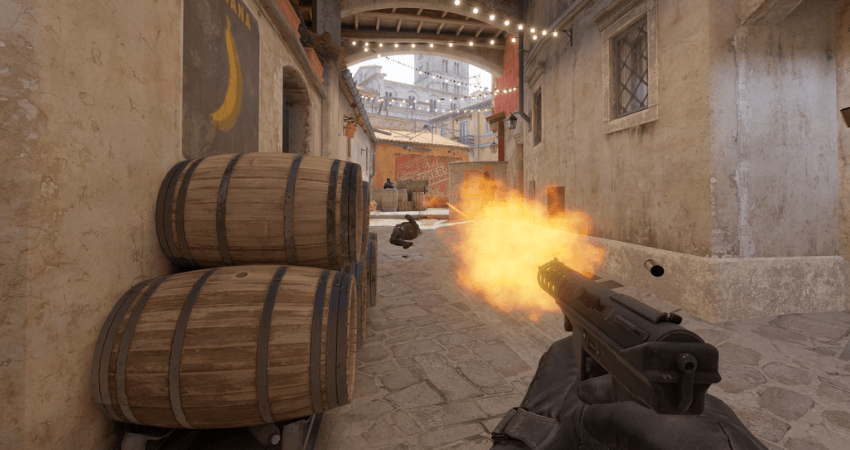
Balancing Lurking with Entry Fragging
You don’t need to be a lurker every round. Sometimes you’ll be the entry fragger, the support, or just a utility thrower. But understanding how to integrate lurking into your overall style gives you more tools to win.
- As an entry fragger, use your lurking experience to predict where defenders hide.
- If you switch to lurking mid-match, your unpredictability will catch CTs off guard.
- Rotate roles. Maybe you lurk during full buys, and entry during eco or force rounds.
- Use your knowledge to help other lurkers. If someone else is lurking, feed them info or watch the flank.
The key is adaptability. Don’t pigeonhole yourself as “the lurker.” Be the player who can do it all—and do it well.
When to Lurk and When to Stick with the Team
The best lurkers know when to act alone and when to join the pack.
Lurk when:
- Your team is executing and you can catch rotating CTs.
- You’re holding a key path (e.g., connector, mid, apartments) that could be flanked.
- You’ve got a strong read on enemy positions and timings.
- You’re confident in your clutch or 1vX potential.
Stick with the team when:
- The round is chaotic and you need numbers.
- Your lurking has been figured out (CTs are adapting or pre-firing your spots).
- The enemy is rushing, and you need to hold the site together.
- You’re on a pistol round or low buy and need trades.
Think of lurking as a tool—not a playstyle. Use it when it brings maximum value. Drop it when it becomes a liability.
Practicing Lurking Skills
Best Practice Routines for Aspiring Lurkers
You can’t just “decide” to be a good lurker. You need to practice specific scenarios and train your mind for patience and awareness.
- Custom aim maps: Work on angles, flicks, and crosshair discipline. Lurkers often face 1v1s—they need to win them.
- Movement maps: Learn how to silently strafe, crouch-walk, and peek without giving away info.
- Utility practice: Know smoke, flash, and molly lineups for every map. These give you tools to isolate or deny CTs.
- Demo reviews: Watch your own matches. Ask yourself—did I lurk too early? Did I wait too long? Did I hold a useless angle?
Create routines that reinforce your lurking mindset:
- Every time you play, pick a round or two to practice pure lurk.
- Set a goal: “I’ll get 1 high-value kill without being seen until I fire.”
- After the round, analyze: “Did I impact the game, or was I a ghost?”
Community Servers and Custom Maps for Lurking Practice
Use CS2’s vast community resources to sharpen your game:
- Yprac maps: These help you train smoke, flash, and molly spots. Essential for lurkers who want to deny enemy movement or rotate safely.
- Retake servers: Great for practicing clutch scenarios that lurkers often face.
- Deathmatch servers: Practice angle holding and reaction times. Focus on small engagements rather than run-and-gun chaos.
- 1v1 arena servers: Lurkers need to win isolated fights—these servers help polish that mechanic.
You can also create custom bot matches where you simulate lurk paths, holding rotations, and silently clearing corners. Repetition builds instincts.
Advanced Lurking Techniques
Creating Distractions
Sometimes, you’re not meant to kill—you’re meant to mislead.
- Throw a fake smoke or flash on A, then rotate B.
- Shoot your gun in one direction while your team sneaks elsewhere.
- Run to trigger footsteps and pull a rotate, then fall silent.
Distraction is mind games. You force defenders to act on bad info. You make them think the hit is coming from one direction—when it’s not. The better you get at this, the more your team trusts you to win rounds without ever entering the bombsite.
The Art of Late-Round Clutches as a Lurker
When you’re the last alive, it’s all on you. This is where lurkers become legends.
Here’s how to clutch like a ghost:
- Stay calm: Don’t panic. If you’ve made it this far, the CTs are unsure too.
- Use sound: Listen for footsteps, reloads, and bomb-defusal sounds.
- Use utility smartly: Save your flash to clear a key angle. Molotov off the bomb to delay.
- Think like the enemy: Where would they expect you to be? Be somewhere else.
- Play the clock: Time is your greatest weapon. Lure them into impatience.
Many of the game’s greatest 1v2 or 1v3 plays come from lurkers. Because they operate from the shadows, they strike at just the right moment.
Conclusion
Lurking in CS2 is a high-impact role that requires more than just sneaking around or camping angles—it’s a strategic mindset. The best lurkers are cerebral, calculated, and adaptive. They’re the silent playmakers who often don’t top the scoreboard but win the most pivotal rounds.
To lurk effectively, you must master timing, map awareness, and enemy behavior. You must know when to strike and when to sit still, when to make noise and when to be completely silent. Every decision you make can open or close a round.
But the beauty of lurking? It’s not bound by strict rules. You can mold it to fit your style—whether you’re slow and silent or fast and aggressive. The key is understanding your impact on the round and always staying one step ahead of the defenders.
Whether you’re solo queuing or grinding with a team, adding a strong lurking element to your gameplay can elevate you from good to deadly. Keep practicing, watching demos, varying your paths, and you’ll soon be the player every enemy dreads—because they never know where you’ll strike from next.
FAQs
What is the difference between lurking and flanking?
Lurking is a planned role where a player stays behind the main team to control space, gather info, and catch rotating enemies. Flanking is a maneuver—any player can flank by sneaking behind enemy lines. Lurking is about timing and subtlety; flanking is usually fast and aggressive.
Can anyone play as a lurker in CS2?
Technically, yes—but to do it effectively, you need good map knowledge, patience, and communication. It’s best suited for players who can think ahead, read rotations, and aren’t obsessed with fragging every round.
How do you practice lurking alone?
Play deathmatch to improve your aim, use custom maps to learn utility lineups, and watch your own replays to identify decision-making mistakes. You can also simulate lurk routes in offline matches and focus on improving timing and positioning.
Should you always lurk if you’re not the entry fragger?
Not necessarily. Lurking is situational. Some rounds require full team pushes or different tactics. You should only lurk when it adds strategic value—otherwise, you risk being irrelevant or disconnected from the play.
How do lurkers deal with aggressive defenders?
Punish them. Let them push into your crosshair. Set traps with your utility, pre-aim common aggression spots, and communicate with your team so you can isolate or double-peek early pushes. With the right timing, their aggression becomes your opportunity.
